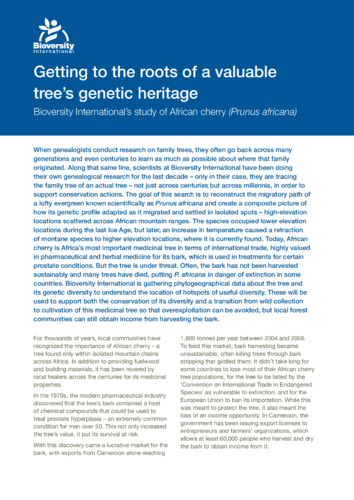Getting to the roots of a valuable tree’s genetic heritage Bioversity International’s study of African cherry (Prunus africana)
When genealogists conduct research on family trees, they often go back across many generations and even centuries to learn as much as possible about where that family originated. Along that same line, scientists at Bioversity International have been doing their own genealogical research for the last decade – only in their case, they are tracing the family tree of an actual tree – not just across centuries but across millennia, in order to support conservation actions. The goal of this search is to reconstruct the migratory path of a lofty evergreen known scientifically as Prunus africana and create a composite picture of how its genetic profile adapted as it migrated and settled in isolated spots – high-elevation locations scattered across African mountain ranges. The species occupied lower elevation locations during the last Ice Age, but later, an increase in temperature caused a retraction of montane species to higher elevation locations, where it is currently found. Today, African cherry is Africa’s most important medicinal tree in terms of international trade, highly valued in pharmaceutical and herbal medicine for its bark, which is used in treatments for certain prostate conditions. But the tree is under threat. Often, the bark has not been harvested sustainably and many trees have died, putting P. africana in danger of extinction in some countries. Bioversity International is gathering phylogeographical data about the tree and its genetic diversity to understand the location of hotspots of useful diversity. These will be used to support both the conservation of its diversity and a transition from wild collection to cultivation of this medicinal tree so that overexploitation can be avoided, but local forest communities can still obtain income from harvesting the bark.

